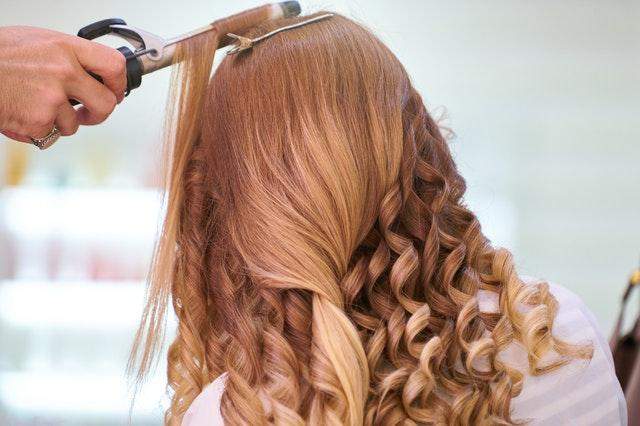|
Listen while working
Getting your Trinity Audio player ready...
|
Hair fall is a very frustrating condition, especially among young women, since the way their hair looks matters a lot. Studies suggest hair fall, having a direct impact on psyche and morale.
Don’t get panicked, According to the American Academy of Dermatology Association, shedding 50 to 100 hairs in a day is normal, reflecting the normal hair growth cycle.
Hair growth cycle
The Anagen phase: is a growth phase, during which the hair follicle forms a new shaft. Around 90% of the hair on the scalp is in a growing phase, lasting from 2 to 6 years.
The Catagen phase: is a transition phase. Lasting for 1-2-weeks, between anagen and telogen. Less than 1% of the scalp hair is in this phase.
The Telogen stage: is the rest phase. Lasting about 3- to 4-month, some of the hair falls out, starting a new cycle in the same hair follicle.
Hair loss is typically related to one or more of the following factors:
Heredity (family history):
Medically termed as androgenic alopecia which can be male-pattern baldness or female-pattern baldness. This is the most common cause of hair loss, usually related with aging. It usually occurs gradually and in predictable patterns.
Hormonal changes and medical conditions:
Hormonal changes during different phases of life, can cause permanent or temporary hair loss. These include adolescence, pregnancy, childbirth, and menopause. Some medical conditions can also affect the hair growth.
Adolescent androgenic alopecia: this occurs more commonly in females, due to high levels of androgens, including testosterone, produced by adrenal glands in females. It occurs due to a genetic predisposition, with surge in the production of androgens at puberty. The increased level of hormones impact the hair-growing capability of the hair follicle, thus eventually causing hair loss
Infection: Certain fungal infections such as tinea capitis or scalp ringworm may cause hair loss in children and adults.
Overactive or underactive thyroid: In hypothyroidism, the thyroid doesn’t make enough of the hormones it needs to function properly. The symptoms include weight gain, constipation, tiredness, dry hair or hair loss all over the scalp.
Autoimmune diseases: Alopecia Areata is an autoimmune disease in which the body attacks its own hair follicles. This leads to bald patches in portions of the scalp.
Improper Diet:
An improper or extreme diet restriction can lead to hair loss. Constraining the body of essential nutrients, will shift energy away from your hair and divert it to your vital organs. Hair requires a lot of energy to grow, and improper diet without enough protein, iron, vitamins, and fatty acids will eventually lead to some hair loss or thinning.
Medications and supplements:
Hair loss can be a side effect of certain drugs, such as those used for cancer, arthritis, depression, heart problems, gout and high blood pressure.
Radiation therapy to the head:
Radiation therapy to head in certain cancers will lead to partial or total hair loss. This is usually permanent for majority of hair follicles, however, some might regrow.
Stress:
Stress is a natural physical and mental reaction to life experiences. Everyone expresses stress from time to time. Stress is the major cause of physical and mental weakening in current times. Whether it’s chronic or sudden, can slow down the hair cycle. When you’re stressed, your body produces a hormone called cortisol, which can prematurely push your hair into its resting phase.
Many people experience a general thinning of hair, after a physical or emotional shock. This type of hair loss is usually temporary, and if adequate measures taken it is preventable and curable.
Hairstyles and treatments:
Hair styling is getting very common, with excessive use of chemicals and heat. The chemicals used for coloring, whatever the manufacturers claim, definitely affect the hair growth. Hairstyles that pull your hair tight, such as pigtails or cornrows, can cause Traction Alopecia. Hot-oil hair treatments and permanent hair colors, can also cause hair to fall out.
Treating and Preventing Hair Loss in Teenage Girls
The best way to treat hair loss is to address the root of the problem. Consider these steps in promoting healthy hair and nutrition for the body:
- Be gentle with the hair, while combing or brushing.
- Use a gentle shampoo for daily use.
- Plan a well-balanced diet with optimal caloric intake. Getting your required vitamins and minerals is crucial for healthy hair. Read more
- Eat more foods containing omega-3s (fish and other sea food and nuts and seeds).
- Vitamin A, Vitamin B, Vitamin C, Vitamin D, and Vitamin E.
- Zinc (meat, beans, whole grains, and nuts).
- Iron (green leafy vegetables are best source of Iron).
- Proper sleep can greatly enhances the health in general. Reduce the hours on mobile and computers.
- Stimulate the scalp with a gentle massage. Use natural oils, such as olive, almond or coconut oil.
- Giving up your cherished hairstyles that require bleach, heat, and other harsh chemicals could be the key in ending your styling induced hair loss.
- Reduce stress.
Photo by Engin Akyurt from Pexels





